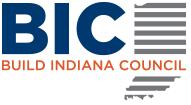Statewide Interstate Tolling
INDOT’s Statewide Interstate Tolling Strategic Plan
In House Enrolled Act 1002-2017 the Indiana General Assembly directed the Indiana Department of Transportation to investigate tolling as a possible way to fund future state highway improvements. While the same legislation included increases in various highway user fees, such as the state gas and diesel taxes, state leaders acknowledged that these revenues will eventually decrease due to cars and trucks becoming much more fuel efficient. Projections show that by about 2025, state revenues for road improvement will begin a rapid decline. Consequently, INDOT’s Tolling Strategic Plan is quite useful to determine if tolling might be an appropriate replacement for, or supplement to, fuel-based user fees going forward.
Key findings in the Plan include:
It is possible to fund major interstate improvements through tolling
Implementing statewide interstate tolling would be complicated
It would take years to collect the first toll and decades to complete a comprehensive statewide program
Open road tolling (versus toll booths where drivers must stop or slow down) is available with current technology
Assumed toll rates per mile for vehicles using transponders would be: 2-axles $.05, 3-4 axles $0.7, and 5 or more axles $.20 – it is also assumed that these rates would increase annually by inflation
Before the state would implement tolling, it would vastly improve the condition and capacity of the interstates: travel lanes would be added, ride quality would be improved, mowing and litter pick-up frequency would increase, snow and ice removal would be the highest priority
Tolling interstates I-65, I-70 and I-94 (after widening them to six-lanes from border to border and outside of I-465) at rates comparable to other state’s toll rates would generate significant revenues such that the system would be self-sufficient – this means that the state could issue debt to finance upfront construction costs and the tolls would be more than adequate to pay back this debt and also cover costs of operating the toll system
Tolling could generate excess funds that could be used for other highway improvements throughout the state
While the current State Administration has decided not to pursue tolling, INDOT’s strategic plan finds that tolling is a viable future funding mechanism. With vehicle fuel efficiency on the rise, tax revenues based on fuel consumption will decline by 2025. Tolling interstates could offset this, but it is not something that can be implemented overnight. For that reason, BIC believes our state leaders should move beyond this strategic plan and begin taking the necessary steps to implement tolling while there is time to do so.
Complete text of the INDOT Statewide Interstate Tolling Strategic Plan
